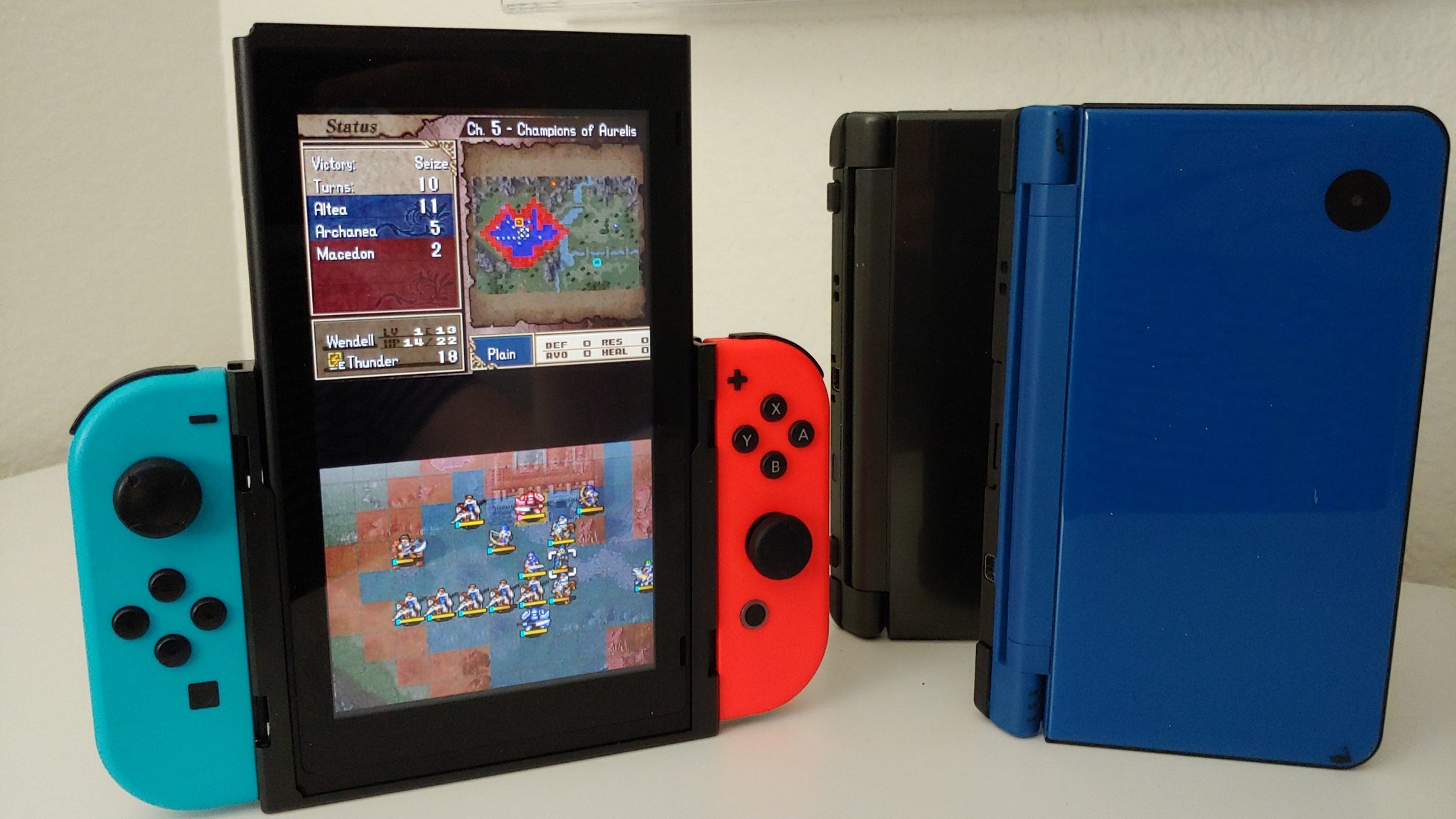After really enjoying Fire Emblem: Three Houses last year, I wanted to go back and explore the series. So I decided to play the remake of the first game for the Nintendo DS. The only problem is that fans of the series don’t like Fire Emblem: Shadow Dragon. At a glance, the game didn’t seem so bad. In fact, the Metacritic score for the game is a respectable 81. Besides all of that, I’m enough of a weirdo that my interest in any given video game is not so easily swayed by consensus—or lack thereof. I chose to play the game. However, I did so in a way that was increasingly removed from the original game, which raises a question.
Did I actually play Fire Emblem: Shadow Dragon?
Allow me to elaborate.
My first deviation from the original intent of the writers, artists, and programmers was the fact that I was playing a remake of the game… and a contentious one at that. I was explicitly warned by a fan of the series not to play this game. I ignored that warning. Perhaps by this transgression alone, I had already strayed so far from the light of the goddess dragon that my experience could only ever be cursed.
In attempt to remove that curse from this game, I applied Cirosan’s Full Content Patch to the game. This fan-made romhack made a number of changes to the game including:
- Removing a character limit for side quests that would require you to purposefully let your units permanently die.
- Including online-only shop items, which are impossible to acquire now, in the base game.
- Optionally replacing some of the character graphics (which fans hated anyway) with graphics from the sequel, Fire Emblem: New Mystery of the Emblem, which never received a North American release.
- Optionally tweaking some stats behind the scenes to also match those of Fire Emblem: New Mystery of the Emblem, apparently making the game somewhat easier in the process.
Then I set out on my journey—or rather Marth’s journey to reclaim his home kingdom of Altea. I engaged the enemy in a series of tactical skirmishes like a more scripted version of Final Fantasy Tactics, my units marching across the terrain like bringers of death on a giant chessboard.
As I worked through the battles, I would occasionally use a savestate. As the name suggests this is a function within most emulators that captures the exact state of the game and saves it, allowing a player to save and load instantaneously and at will. This means that if I make a major tactical error, I could simply reload my most recent savestate. I was no longer at risk of losing any of my units to permanent death. In a sense this significantly diminishes the risk of any individual move, possibly undermining the value of the game’s carefully tuned systems. Then again, the hardcore player would have reloaded the entire battle if an important unit fell, and a savestate would simply have spared that player the annoyance of having to replay the opening moves that battle. This was probably my most significant deviation from the original play experience… and one that fundamentally changed the characteristics of Shadow Dragon. The game became a series of simple puzzles, punctuated by short visual novel-esque vignettes.
Finally, to add to a bit of absurdity to the whole Shadow Dragon experience, I decided not to play the game on original hardware. Instead, I played the majority of the game on a modded Nintendo Switch running the melonDS emulator turned sideways in a Flip Grip. It was a weird flex to be sure, but it added a peculiar sense of delight to my time with the game.

Though my experience with Shadow Dragon was nothing like what the creators of the original game could have imagined over 30 years ago, I think it still retained some of its original charm. Devoid of any substantial difficulty, I felt a bit like a tourist watching a reenactment of some mythic folklore. The story was simplistic in its structure like a shorter and more accessible Le Morte d’Arthur. It’s still compelling, even if the suspension of disbelief is always on the verge of breaking. And as the game drew to a close, my original question remained.
Did I actually play Fire Emblem: Shadow Dragon?
If not… at what point was the game no longer the game? Do I get a pass because I was breaking a game that, according to many, wasn’t particularly good in its original form? For that matter, what does it mean to “play” a video game? If I break all of my toys into pieces and cobble together some new play experience, is that act of play diminished because I didn’t follow the method of play that the toymaker assumed?
Or perhaps it would be more appropriate to compare what I have done to editing the text of a novel and trying to engage in discussion of that novel with people who read the original version. As an English teacher, I would never do such a thing. Perhaps I have strayed irredeemably from the light of the goddess dragon. Then again, preparing the text of Le Morte d’Arthur for a contemporary audience would require a bit of respectful updating. Perhaps there is no singular correct answer to the question.
What do you think?


2 replies on “What Counts as Playing the Game?”
[…] Fire Emblem: Shadow Dragon wasn’t stellar, but I had a decent time with it considering it’s just a straightforward remake NES game. I’m sure it will slide down my ranks as I get further away from it. […]
LikeLike
[…] of New Mystery of the Emblem. In retrospect, I’d say that effort was a success because I had a decent time with the […]
LikeLike